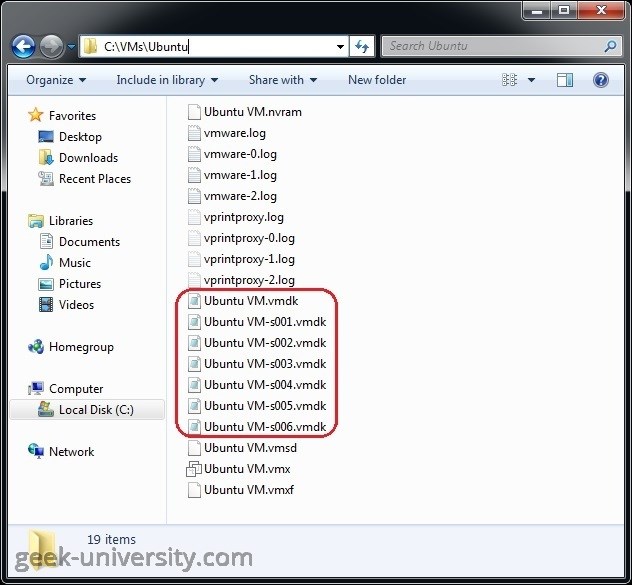

- #Creating a virtual machine with more disk space how to
- #Creating a virtual machine with more disk space windows
The next reboot or after you run partprobe(8) or kpartx(8)ĭue to the final warning, the VM must be rebooted before you can continue. WARNING: Re-reading the partition table failed with error 16: Device or resource busy. Write the changes to the partition table using the "w" command.Ĭalling ioctl() to re-read partition table. In this case, the sequence of entries was, "t, 3, 8e".Ĭhanged system type of partition 3 to 8e (Linux LVM) VBoxManage: error: Cannot register the hard disk '/u01/VirtualBox/ol6-112/ol6-112.vdi' (3917-5221, default 5221):Ĭhange the partition type to "Linux LVM". If this command gives an error, saying the disk is already registered, use the UUID presented in the error in place of the file name, as shown below.
#Creating a virtual machine with more disk space how to
The examples below show how to resize a virtual disk to 40G on Linux and Windows. If you want to specify the size in bytes, use the -resizebytes option. The -resize option assumes a size is specified in megabytes. The approach is similar on Linux and Windows. If the virtual disk is defined as dynamically allocated (Dynamically allocated differencing storage), the existing disk is extended using the VBoxManage modifyhd command. If you like this article, do check out how to create a shared folder in VMware and how to boot from USB in VMware.Home » Articles » Vm » Here VirtualBox : Extend Virtual Disk and File System If you are stuck or need some help, comment below and I will try to help as much as possible.
#Creating a virtual machine with more disk space windows
For instance, if you’ve installed Windows in the virtual machine, you can open the Disk Management tool to create or extend partition. So, you have to manually create a new partition or extend the existing partition from the guest operating system. You’ve successfully increased the VMware virtual machine disk size.ĭo keep in mind that though you’ve increased the disk size in VMware, the guest operating system doesn’t know it because the extended storage will be listed as Unallocated. You can see the new VM disk size in the main settings window. Once done, you will see the confirmation message. The above action will expand the drive according to your settings. That way, the total new drive capacity will be 40GB.ĥ. For example, I want to expand the disk by 10GB, so I replaced 30 with 40. In this window, type in the total new drive capacity of your choice. On the right panel, click on the “ Expand” button next to “Expand disk capacity”.Ĥ.

In the VM settings window, select “ Hard Disk” on the left panel. After opening the VMware, on the left panel, select the virtual machine and then click on the “ Edit virtual machine settings” option from the right panel.ģ. First, open the VMware application by searching for it in the start menu.Ģ.

Note: I’m showing in VMware Workstation but the steps are pretty similar for VMware Player too.ġ. Once you’ve done the above two things, proceed to the steps below to increase VMware virtual machine disk size. Though not compulsory, depending on the VM’s operating system, snapshots taken before extending the hard disk size can cause problems in certain situations. Second, delete any snapshots of that virtual machine. Important Pre-stepsįirst, make sure the virtual machine for which you want to extend the hard disk size is completely turned off. Steps to Extend or Increase VMware Virtual Machine Disk Sizeīefore proceeding to increase the virtual machine disk size in VMware, there are few things you should know and do. Follow the below steps to extend disk size in VMware virtual machine. Thankfully, though not obvious at first glance, it is easier than you think. You cannot simply go to the Windows Disk Management tool and extend the hard disk. However, if the VM is already installed, then the process of extending the disk size is a bit different. If that’s the case, you can change the allocated space before installing the VM. That being said, like me, if you are a heavy user who uses the VM on a daily basis as part of the workflow, the poultry 60GB many not be enough. For most people, installing the VM with suggested 60GB is plenty enough. For example, for Windows operating system VMware suggests using around 60GB.


 0 kommentar(er)
0 kommentar(er)
